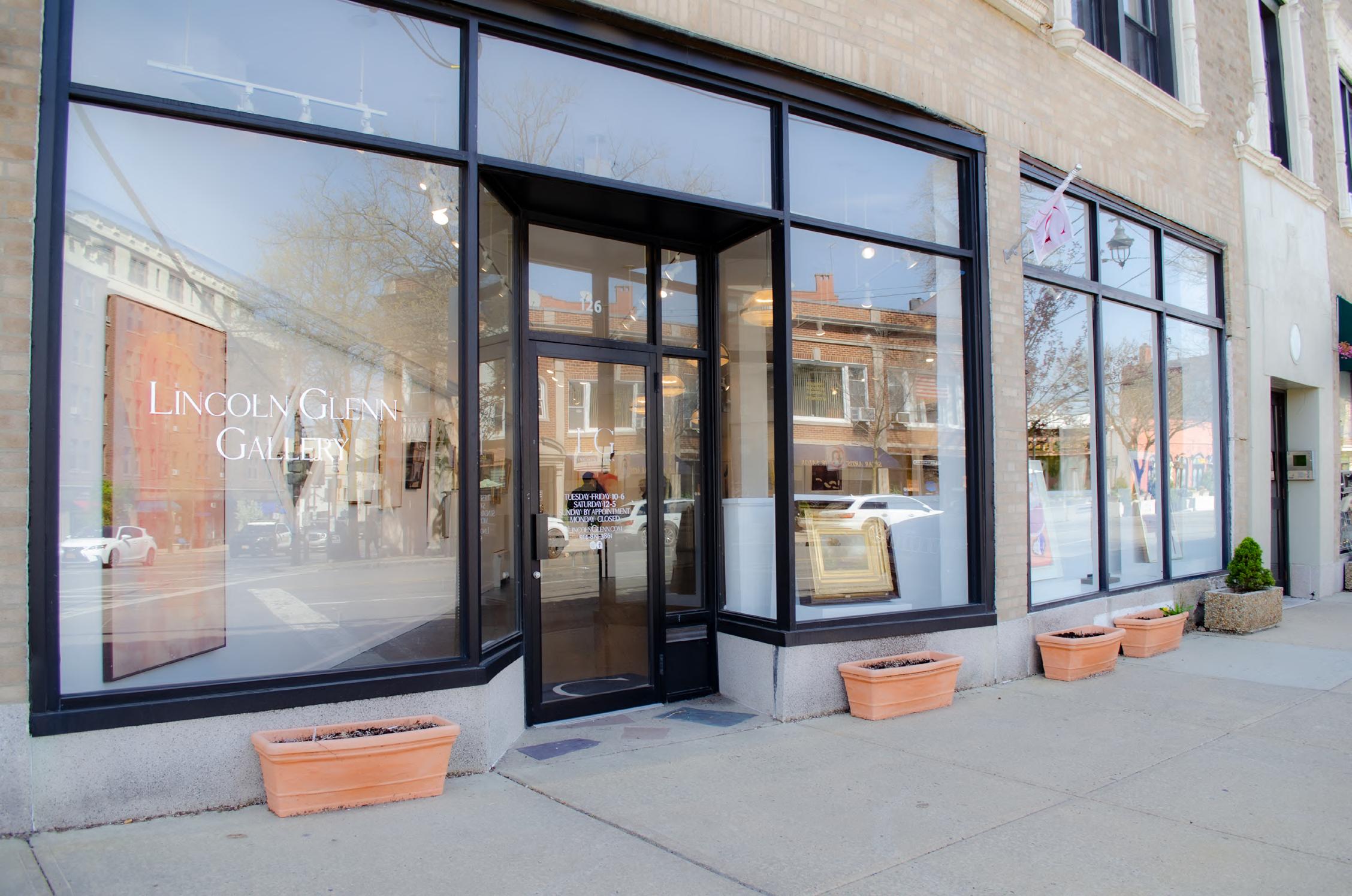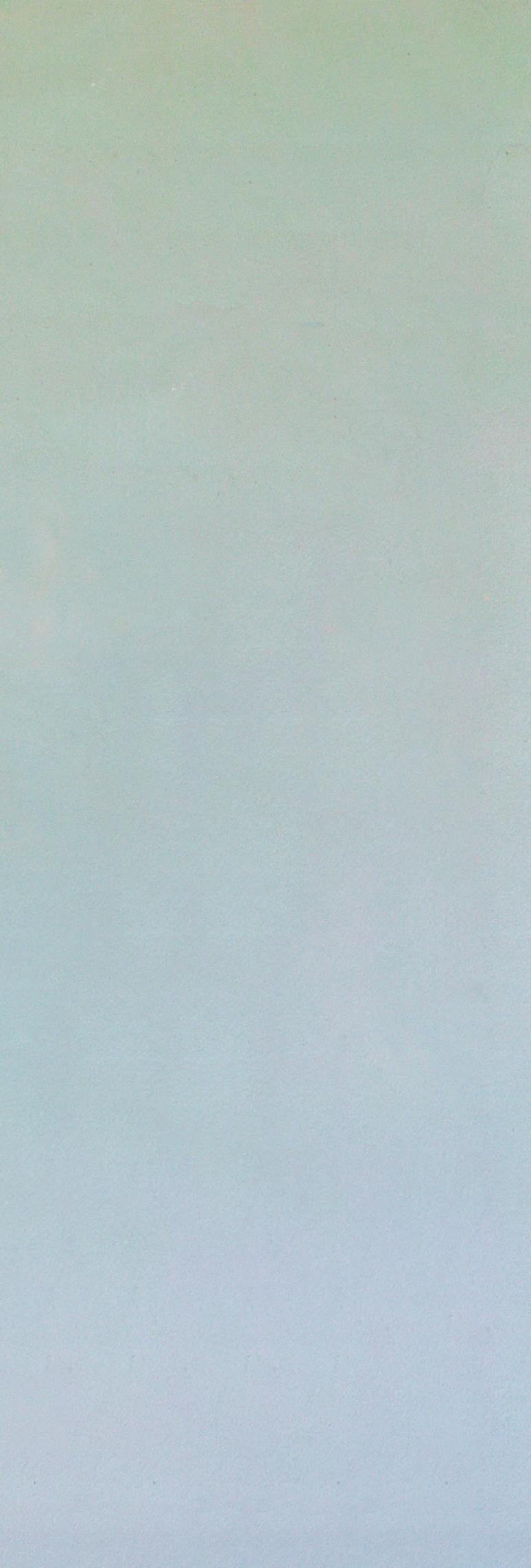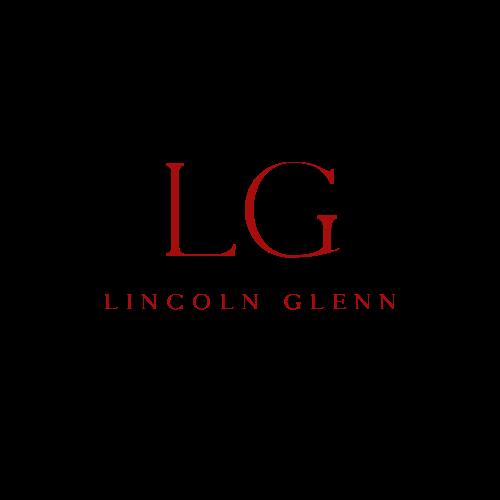Foreword and Acknowledgments
It is with the greatest honor that we present the exhibition Sherron Francis: A Retrospective. Lincoln Glenn’s current catalogue celebrates the opening of our gallery in the village of Larchmont, Westchester County, New York. This exhibition represents the first solo exhibition at the gallery, where we plan to exhibit artworks from nineteenth- and twentieth-century American artists, with special interest in historically overlooked artists.
Meeting Sherron Francis was a whirlwind event and a catalyst for the founding of Lincoln Glenn. We met Sherron in the summer of 2021, first by chance, spotting one of her paintings and then by receiving a formal introduction from Geoffrey Fleming, a dear mutual friend. Upon meeting this charming but reserved artist, we fell more and more in love with her work, including each color and phase of artistic exploration. Many of her paintings radiate an ethereal aura and evoke a deep sense of spirituality that we find particularly appealing.
We believed the art world had missed a great artist and it was time to shine light on her. Her past representation by star-studded galleries, inclusion in a Whitney Biennial, and positive reviews by influential critics corroborated our confidence in her talents. Yet, Francis had not had a solo exhibition for 36 years. We were not surprised. Only in the past five years have many pioneering female Abstract Expressionists finally received their well-deserved recognition. Many of Francis’s contemporaries, such as Vivian Springford, Elaine de Kooning, Grace Hartigan, and Lynne Drexler, have become stars in the art market seemingly overnight after being overlooked for decades. It is time that Sherron Francis joined them.
We want to give special thanks to Geoffrey Fleming for the personal ice breaker and perseverance in connecting us with Sherron, Sophie Coco for her dedication and assistance in every facet of this exhibition, and Michael Mahon for his diligent art handling. This exhibition would not have been possible without these three hard-working people. Above all, we are appreciative of our budding friendship with Sherron, and we hope to share her stunning artworks with as many people as possible.
Douglas Gold & Eli Sterngass
1
Sherron Francis: A Color Field Artist Rediscovered—Paintings, 1972–81
By Lisa N. Peters, Ph.D.
Constant experimentation characterizes the art of Sherron Francis. Trained in the academic tradition in the Midwest, Francis produced figurative work in the Post-Impressionist spirit before settling in New York City in 1968. There she became an abstract painter at the center of the Color Field movement. Her works were in several solo and important group shows and received a significant amount of press attention. Many were purchased by corporate and private collectors (including Helen Frankenthaler and Clement Greenberg). However, in 2000, when the Greenwich Village building, where she lived and worked, was taken over by New York University, Francis left the New York art world behind, moving to the North Fork of Long Island, where she had summered since 1973. Her large body of work—some examples not seen for forty years and some never exhibited— deserves to be restored to its context and considered on its own terms. This exhibition reintroduces her intellectually conceived, radiant, and adventurous paintings, created between 1972 and 1981. Her oeuvre exemplifies the significant yet often forgotten contributions of American women artists to abstract painting movements in the late twentieth century.
Francis was born in 1940 in the Chicago suburb of Downers Grove. She began making art in high school, often decorating the school gym for events. In 1958, she enrolled at the University of Oklahoma, where she took basic drawing classes. Realizing she had artistic aspirations, she transferred in 1960 to the Kansas City Art Institute, which she “absolutely loved.” There she and fellow art student Dan Christensen established the lasting friendship they would maintain throughout the decades that followed. At the Institute, Francis initially studied interior design but chose to major in fine art, taking classes in drawing and painting. Among her most memorable Institute teachers was Wilbur Niewald, who “was big on Matisse and Cézanne.”
In 1963, Francis began the MFA program at Indiana University, Bloomington, having received a two-year teaching scholarship. She stayed for a third year after being awarded an “all campus scholarship”—rarely given to fine art students. This provided her with a monthly stipend. The graduate painting and drawing instructors were Robert Barnes, William Bailey, and James McGarrell, and Bailey especially liked Francis’s drawings. In Indiana, Francis also studied pottery, in which she was successful but often did not follow the standard protocol (at one point her kiln collapsed due to her experimentation). Christensen was in the same program, and both he and Francis were graduate teaching assistants. After receiving her degree in 1966, Francis took a teaching job at Eastern Michigan University, Ypsilanti. At that point in her career, she was using the nude figure to explore a range of formal issues, and she focused on men because there was more “going on in the inside of their forms” than in women. One of her paintings of a nude man caused a controversy. When it
2
was on view in an exhibition at the University of North Dakota, someone jokingly pinned a fig leaf on the figure. The painting was promptly removed to the office of the art department chairman while a note was left in the exhibition, indicating that the work could be seen only on request.1
Often almost destitute, Francis had only $300 on hand when she moved to New York in 1968. There, she first resided at 736 Broadway in Greenwich Village, in a sixth-floor loft with views of several bridges. When a movie producer bought her loft, she relocated, along with Christensen, to a nearby building at 16 Waverly Place, where she had a loft on the first floor and Christensen had one on the third. The neighborhood had for some time been the center of the New York art world, where legendary figures in Abstract Expressionism congregated at the Cedar Bar. It was also a gathering place for many young artists, who were at the forefront of a resurgence of abstract art, after a period in which Conceptual art had made it seem as if the art object would soon be obsolete. Reviving painting as a vital medium, the new generation moved from the gut-wrenching angst of the works of their predecessors to Color Field paintings, creating paintings as unified objects in their own right and exploring properties of color, materials, form, and pictorial space. Among Francis’s neighborhood friends were several artists who were delving into such new painting frontiers, including Larry Poons, Peter Reginato, Michael Steiner, Larry Zox, and Christensen. Many other artists resided in the connecting buildings at 12, 14, and 16 Waverly Place, including Jim Anderson, Paula DeLuccia (a student of Francis who later married Larry Poons to whom she was introduced by Francis), Mernet Larsen, and Ree Morton. Larsen reminisces that “many gatherings of color-field painters met in the building, on the roof, and in Dan’s loft.” She remembers that the critic Clement Greenberg often joined in, giving his pronouncements as to which paintings had “quality.”2 Francis recalls as well that “most of the painters listened to Greenberg; he was very perceptive.” Francis also met up with fellow artists at Max’s Kansas City, a bar on Park Avenue South (in business 1965–1981), which was the premier gathering place for avant-garde artists and filmmakers in the era.
In April 1970, Francis exhibited large-scale oil paintings of nudes in interiors (men in doorways, on Oriental rugs playing games) and still lifes at the Bowery Gallery, one of the city’s first cooperatives. The show was reviewed in Artnews. 3 A short time afterward, due to the difficulty of paying for models and her interest in the “abstract painting going around in New York,” Francis abruptly abandoned the figure and began working abstractly. At first, she painted in oils on small canvases, but she was soon using water-based acrylics and working on a larger scale. She began to roll out long lengths of unstretched canvas on the floor. Using squeegees of various widths instead of brushes, her aim was to “draw with paint,” loosening her control so as to make compositional decisions in the course of the painting process. She left the cropping of the canvas and its stretching for the last phase. Sometimes she worked on several paintings at once, because of the drying process, and this became part of her method. Once in a while, she used a “crummy spray gun so that accidental things happened” or to “hit an edge or calm down color without blocking it out.” She used brushes infrequently, only when she was “in the middle of a work, on her knees.” 1 “Controversial Art,” Anderson Daily Bulletin (North Dakota), April 22, 1966, 6. 2 Larsen email to Eli Sterngass, Lincoln Glenn, LLC, July 15, 2022. 3 “Reviews and Previews,” Artnews 69 (April 1970).
3
What emerged in her art was a particular pictorial structure that became the basis of her art throughout her career, opening up a wide range of exploratory opportunities. Using squeegees, she created stained grounds in which she placed isolated central shapes. Freed from the edges, the shapes appear to float, their direction and movement determined by Francis in her decisions as to a work’s proportions. After at first using shiny pigments, Francis found that she preferred matte paintings, which she created by laying “stains on top of stains” that bled into the canvas surface. She kept her paint thin so you can “see the canvas weave.” Thus, the paint “did not look like it was on the surface.” An example is the large Coarse Aggregate, 1972, in which the central shape is mirage-like in its weightlessness, creating the illusion that it is emerging from within the canvas itself. In some central shapes, she used squeegees with greater force, such as in Ashton, 1972, in which her horizontal movements blend with underlayers, and their hues are only evident at the edges, where they seep out. Adding thicker, more viscous paint into these forms, they appear to rest on or project out from the surface. Francis thought about her paintings as “whole things”; she achieved this with a subdued palette, with which she felt “she did better than with bright colors.” Her use of light and softly modulated hues enabled her to explore subtleties of value, tone, and tint. In the interactions that resulted between shape and field, she considered properties of light, mass, form, and space. Often the central shapes seem to reflect on and impact the colors of the grounds. Indicating how light blends nearby colors, she added a naturalistic sense of unity to her aesthetic totalities. Francis’s figural training is demonstrated in her sensitivity in these works to lines, movement, mass, and voids.
As these paintings reveal, Francis gave special focus to edges as transitions that affect the eye in a variety of ways. She investigated how color itself can produce planar implications rather than just changes in hue. The underlayers visible at the edges of the central shapes can seem either illusionistic or decoratively frame-like. Francis thought about the atmospheric and spatial results from soft or hard contours as well as from various color relationships. In the final cropping phase, she made compositional decisions, cutting canvases into vertical rectangles around vertical forms to create monumentality and upward movements that vary in velocity. Guiding the viewer’s eye to a painting’s upper register, these images have a spiritual dimension. She often set horizontal shapes within horizontal spaces, creating a more meditative feeling by holding the viewer’s eye in the middle ground.
Expressing issues at the heart of the Color Field discourse in the New York art world, Francis’s art gained much recognition in the early 1970s. In 1971, Christensen introduced her to the prominent German-born art dealer André Emmerich, in whose gallery he had begun showing two years earlier. In January 1973, Emmerich held a solo exhibition of Francis’s work. This was a prestigious debut, given the gallery’s reputation as a showcase for major figures in the New York School, including Jack Bush, Sam Francis (no relation), Al Held, Hans Hofmann, Frankenthaler, Alexander Lieberman, Morris Louis, Kenneth Noland, Beverly Pepper, Dorothea Rockburne, and Esteban Vincente. The exhibition was reviewed in the New York Times by Peter Schjeldahl, who wrote that Francis had sidestepped the danger of being derivative of such artists as Mark Rothko, Louis, and Frankenthaler by her use “of a
4
single canny formal device.” He stated: “all her canvases are tall, vertical rectangles. What this shape achieves is a physical presence that supports the paintings’ fragile play of color and texture,” confronting “the viewer with a satisfying firmness, inviting delectation.” Schjeldahl observed that each painting floated a “warm, soft color” within “a somewhat less-intensely colored field” and that the amorphous internal shapes were “closely related by hue to the surrounding fields.” Commenting that the canvases were “alive with a variety of evanescent hues and tints,” he stated: “The goal of her art is to be at once as gorgeous and as delicate as possible; she intends to ravish.”4
Francis was also featured in the Whitney Biennial, held January–March 1973. In the show, she represented a group of “younger painters” who reacted against the “sharp-edged abstraction that characterized painting during the Sixties,” producing “softer, more personalized sorts of canvases,” as noted by Hilton Kramer.5
Francis had two exhibitions in the following year, a two-person show (with sculptor Roger Williams) at Janie C. Lee Gallery in Houston, in September–October, and another solo show at Emmerich, in November. In a review of her Houston show, Ann Holmes reported in the Houston Chronicle on Francis’s “stained canvases, long and narrow,” some in which she “employed a longish loaf ‘shape’ as a device for effecting an impressive play of subtly changing color layers.” Holmes wrote: “The work is mystical in a sense, its color tones layering suggest a push through to other not yet manifested images.” Holmes concluded: “And if the art is romantic in its gentle tones and rounded shape, Francis, nonetheless paints with a tough discipline and balancing intellectuality.”6
Three articles addressed the work in Francis’s Emmerich show. A review in Art International related her washes of color “to the tradition that originated with Frankenthaler.” The unidentified reviewer commented that Francis was devoted to the “nuances of this tradition” in works “composed entirely of nuances.”7 In Artnews, Peter Frank remarked on the “pictorial tensions” in Francis’s paintings, in which “occasional wanderings of the brush” give her work “an irregularity that suggests the regions furthest from the eye, lying beyond focus, of a body in space.”8
The longest commentary was in Whee Kim’s article in the November 1974 issue of Arts, titled “A Personal Definition of Pictorial Space.” In an overview of abstract painting in the era, Kim first made a distinction between “Idea” painters—driven more by “thoughts” than aesthetics, such as Frank Stella, Ellsworth Kelly, and Agnes Martin—and artists concerned with the “purely aesthetic presence of their paintings, eluding intellectual formation”—such as Jules Olitski, Frankenthaler, Noland, Friedel Dzubas, and Bush. Kim then identified eight “young” painters who understood “the condition for maintaining content—as abstractness.” He felt that the artists—David Diao, Brice Marden, Peter Bradley, Edvins Strautmanis, Pat Lipsky, Ronnie Landfield, Frank Bowling, Christensen, and Francis— whom he categorized as Lyrical Abstractionists, had developed natural and uncontrived styles, avoiding eccentric devices to develop personal definitions of pictorial space, in which they were open and flexible “to what is not yet formulated.” Kim described Francis as a “painter who could easily be
4 Peter Schjeldahl, “Abstract Painting—The Crisis of Success,” New York Times, February 4, 1973, 127.
5 Hilton Kramer, “Resurgence of Abstraction,” Baltimore Sun, February 2, 1973, 4.
6 Ann Holmes [Fine Arts Editor], “2 Young American Follow Gallery’s Stars,” Houston Chronicle, October 3, 1974.
7 “New York Letter,” Art International (November 15, 1974): 57.
8 Peter Frank, “Sherron Francis,” Art News 73 (November 1974).
5
underestimated.” To Kim, there was “strength and determination” in her “sense of perfectibility,” in the “grace and restfulness that permeated her Emmerich exhibition. Kim wrote: “She has asserted the credibility of her own answer to the problem of the outer edge of a canvas by limiting her investigations to a singular central image.” He commented: “One would have to go all the way back to Giorgio Morandi to find a comparable sense of economy and balance, achieved through controlled modulations of light.”9
In 1973 and 1975, Francis was included in group shows at André Emmerich in Zurich. During those years, she broadened her inquiries in a few directions. She introduced more surface motility into works such as Nebo, 1973 and Cheating Heart, 1975, in which she retained the central shape but merged it more into grounds suggestive of the dispersive light effects in impressionist paintings. In some works, she applied translucent stains that extend almost to the canvas edges. These approximate gossamer veils, appearing to both penetrate the surface and flow over it at the same time. In October 1975, Francis was featured in an exhibition at Dootson-Calderhead Gallery in Seattle, which also included paintings by Andy Warhol, Robert Rauschenberg, Peter Plagens, and Josef Albers. In a review, Jane Snyder commended Francis’s Slate Hill and Blue Stone as “perhaps the most visually and sensually pleasing paintings in the show.”10 In November, a three-person show at the same gallery featured Francis, Christensen, and Bradley.
In 1977, Francis introduced commercial insulation gravel “in great hunks” into her pigments. She continued to unite paint and canvas but with this medium, she played with illusionistic and literal depth. At times she produced thick crusts that cover her surfaces. She joked at the time that she could sell these works to the “highway department because their structures were so strong.” In 1977, she had a solo exhibition of eight paintings at Kornblatt Gallery in Baltimore. Reviewing the show in the Baltimore Sun, Barbara Gold stated that Francis was a New York painter whose work is part and parcel of what can, today be termed “New York painting.” In the works, which Francis produced specifically for the show, she demonstrated the new physicality of her surfaces. Gold wrote that the paintings, done in acrylics, were “heaped, varied, and modulated to avoid the flatness of the Sixties.” Some colors, Gold noted, tended “toward a sort of ice-cream effect.”11 When she was included in the following year in the traveling exhibition, Recent Works by New York Artists, a reviewer for the Roanoke Times (Virginia) observed her “clean, smooth curves of pure color against a densely mottled, deeply stained background texture.”12 In some works in 1977 and 1978, Francis turned to a more active drawing style. In Tideline, 1977, splotches of blue paint against white tinted smudges and stains evoke the mystical qualities of the distant mists and mountains in Chinese Southern Song painting of the thirteenth century. In 1978, Francis combined free lines, staining, and her cracked and pebbled gravel additive in a kind of “crazy drawing.” There is a sense in the work of freewheeling beachcombing. In 1978 Francis was given recognition in her inclusion in an exhibition at the American Academy and Institute of Arts and Letters of “paintings and sculpture by candidates for art awards.”
9 Whee Kim, “A Personal Definition of Pictorial Space,” Arts Magazine 49 (November 1974), 74–78.
10 Jane Snyder, “Pop-art display: National Artists Exhibit Work,” Campus Cryer (Central Washington University, Ellensburg), October 30, 1975, 3.
11 Barbara Gold, “Art Notes: The Drawing Show: Simply Beautiful,” Baltimore Sun, May 15, 1977, 46.
12 “Recent Works by New York Artists,” Roanoke Times (Virginia).
6
The landscape ideas that emerged in Francis’s art in the mid-1970s suggest that the influence of her time on Long Island’s North Fork had begun to permeate her art. She preferred the area, where she first summered in 1973, to the more sophisticated South Fork, which to her “seemed like Soho” Since the mid-twentieth century, the Hamptons had been a destination for avant-garde American artists and expatriates. To Francis, it was important to be elsewhere, and she enjoyed what was then a relatively undeveloped place. In the summers, she did not want to see the same people she saw “every day in New York.” She delighted in coming to know the coastal landscape and locals, including farmers and fishermen. She stayed in a number of locations during her early Long Island summers. She spent one summer in a house she shared in Southold with Sigrid Burton, Frankenthaler’s assistant. During another summer, she resided in a trailer with Paula DeLuccia (soon to be Paula Poons). In Cutchogue in the mid-1980s, she operated her own fishing boat, a 43-foot stern trawler named Selma.
In 1979, after a period when she had created many works in subdued umbers and grays with varying surface qualities, she reintroduced a richer, brighter palette in paintings such as Bay Queen I, Dry Gulch, and Befit. She continued to “draw” with squeegees and to include central motifs, sometimes allowing the sculptural properties of the insulation cement to form shapes. In 1979, when a strange creature with the bio-morphic qualities of a Max Ernst painting emerged in a painting, Francis titled it Alien. Increasing the freedom of her movements, she produced more diffuse, active surfaces. In 1981, she produced a series of much quieter images in the light-toned blended palette she had used earlier. For these works, she used pouring rather than squeegees, letting the paint flow slowly so that shapes emerged, which she then at times touched up with light brush handling. Among these are Pete’s Neck. These works were inspired by the light, water, land, and air of Long Island, and Francis refers to them as “island paintings,” also acknowledging their map-like aspects. Indeed, the shapes suggest areas of dry land emerging from the depths, with shallow water lapping their shorelines against stretches of open glistening water. Their perspectives seem to be aerial or sweeping diagonals. A group of these works was exhibited in a four-artist exhibition at Watson / de Nagy & Company, Houston, in February–March 1981.
Beginning about 1980, Francis returned to an exploration of clay. As a 1981 Arts writer contended, the medium not been used in the past “for non-decorative, non-functional, non-representational pictorial
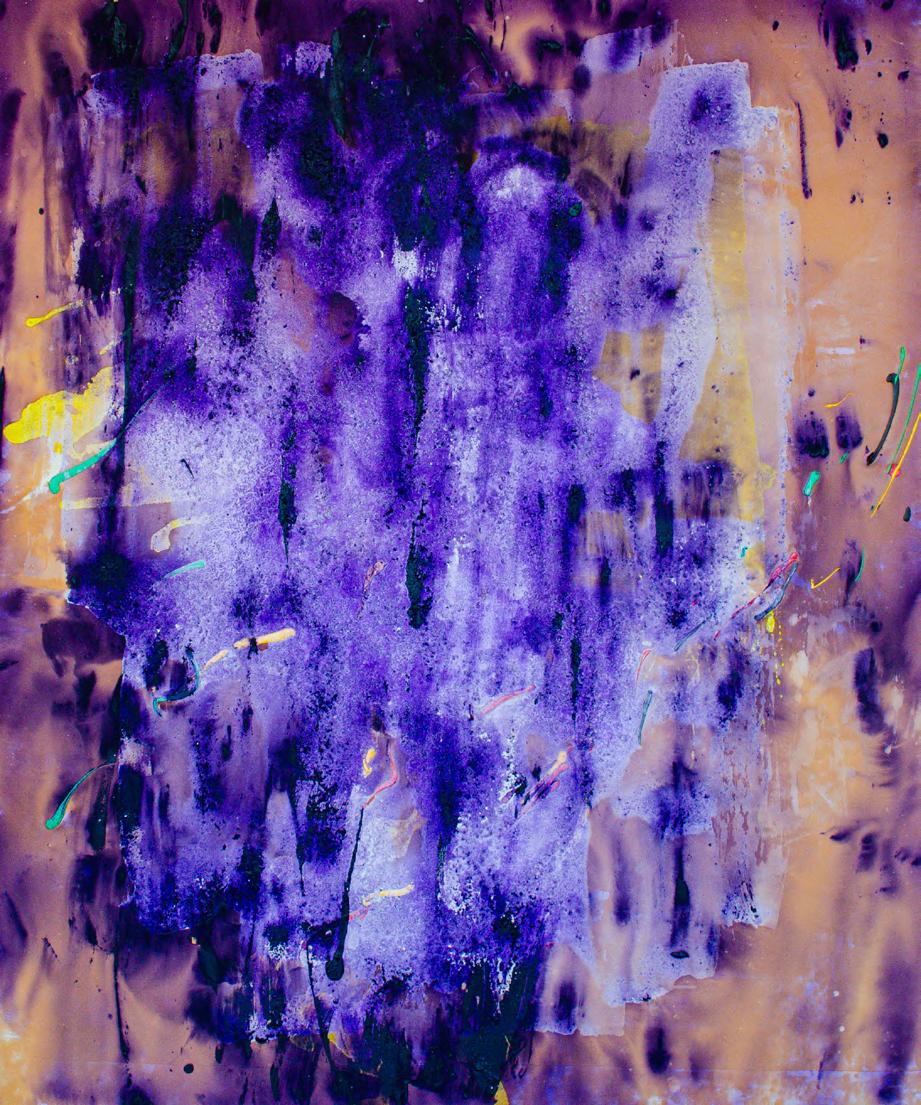 Befit, 1979, acrylic and mixed media on canvas, 79 x 67 in.
Befit, 1979, acrylic and mixed media on canvas, 79 x 67 in.
7
ends.”13 At Clayworks Studio Workshop, she was among the visiting artists featured in an exhibition in 1980. Other artists included were Carl Gilko, Joyce Kozloff, Kikuo Saito, James Walsh, and Betty Woodman. In the show’s catalogue, Walsh, the Workshop’s executive director, wrote that its concept “was to provide the means, facilities, and expertise for mature artists of varied disciplines to experiment, collaborate, and grow creatively with clay as the medium for new experience.”14 In a 1982 show at Clayworks, which also featured work by Walter Darby Bannard, Kenneth Noland, and Gilko, a reviewer wrote that Francis used “clay basically as a support for ‘painting’ but her central image is squeegee-produced in a seemingly spontaneous manner.”15 A 1984 show of Clayworks artists at Watson /de Nagy Company, Houston, featured works by Francis, Walter Darby Bannard, and Reginato. A solo show of Francis’s “ceramic paintings” was held at the gallery in the same year.
In the early 1990s, Francis also worked in wood. When she participated in a show at Krasdale Sites in Westchester in 1993, Vivien Raynor took notice in the New York Times of her assemblages made of “various-size slabs of wood lightly stained with color and fixed together in a kind of fan shape or longer, thinner shapes whitened and varnished and bunched up as if they were a bundle of sticks arrested in flight.”16
Solo shows of Francis’s art were held at Tibor de Nagy Gallery, New York (1978, 1979, and 1980); Bell Gallery, List Art Center, Brown University (with Sandi Slone) in 1978; at Douglas Drake Gallery, Kansas City, in 1981; and Watson / de Nagy Company, Houston, in 1984. She was also featured in many significant group exhibitions. In 1983, eight paintings by Francis were in a show of the collection of the Continental Insurance Company, New York, along with works by many of the era’s leading contemporary artists. Francis’s other notable group exhibitions include Selected Paintings of Contemporary Abstractionists, held in 1985 at Rubiner Gallery, Royal Oak, Michigan (also including the work of Landfield and Zox) and a show of work by Kansas City Art Institute alumni, held at Douglas Drake, also in 1985. A reviewer commented that Francis’s paintings consisted of “giant, abstract calligraphies animated by an emphasis on depth (illusory as well as literal) in the manner of Jules Olitski’s recent paintings.”
Pete’s Neck, 1981, acrylic on canvas, 34 1/2 x 22 in. she was one of twenty-seven artists in The Broken Surface, a traveling show organized by Daniel Cameron, representing works by artists who created a sense of “abrupt transitions and interruptions of surfaces that become other surfaces.”18

13 “Group Show,” Arts 46 (May 1981), 35.
17 In 1981,
14 James Walsh, Clayworks Studio Workshop: Visitors from the Fall of 1980, brochure and exh. cat. (New York: Clayworks, 1980).
15 Evelyn Blakeman,” Clay Gets Varied Treatment in Show,” Edmonton Journal, June 25, 1982, 29.
16 Vivien Raynor, “‘Spice of Life’ and ‘Artful Island’ at Krasdale Sites,” New York Times, July 4, 1993, WC12.
17 Daniel Hoffmann, “Abstract Bronzes Among Show’s Best,” Kansas City Star, April 28, 1985, 6F.
18 Daniel Cameron, “Introduction,” in The Broken Surface, exh. cat. (traveling show, Bennington College, Vermont; Tibor de Nagy Gallery, New York; Virginia Tech University, Atlanta), 1981.
8
In 1983, the art historian Jack Flam included a painting by Francis in Artists Choose Artists II; hers was one of sixteen selected, along with examples by Carl Andre, Jim Dine, Brice Marden, Richard Serra, and Frank Stella.
Francis taught art at the Ridgewood School of Art and Design (New Jersey), from 1972 to 1985 and at Cooper Union from 1978 to 1985. There, the resemblance of her work in clay to paintings, demonstrating “lots of texture,” affected “lots of students over the years.” Francis’s students appreciated her support of their decisions, including the taking of their art in new directions.
In 2000, when Francis’s landlord sold the Waverly Place artist-loft buildings to New York University, she moved permanently to Long Island’s North Fork, buying first one house before selling it to buy another. The art market had also collapsed, and needing a way to survive, Francis began a new career as an antiques dealer. The portion of her life’s work in this exhibition presents an exciting rediscovery and the possibility of bringing more of her art to light.
Lisa N. Peters, Ph.D.
Thanks are due to Sherron Francis for several delightful conversations about her art and career and the quotes included in this essay.
9
Coarse Aggregate, 1972
acrylic on canvas, 88 x 52 3/4 in. signed, titled and dated on the reverse

10
Tideline, 1977
acrylic on canvas, 93 x 45 in.
signed, titled and dated on the reverse

11
Fat Ruby, 1972
acrylic on canvas, 84 x 47 in. signed on the reverse
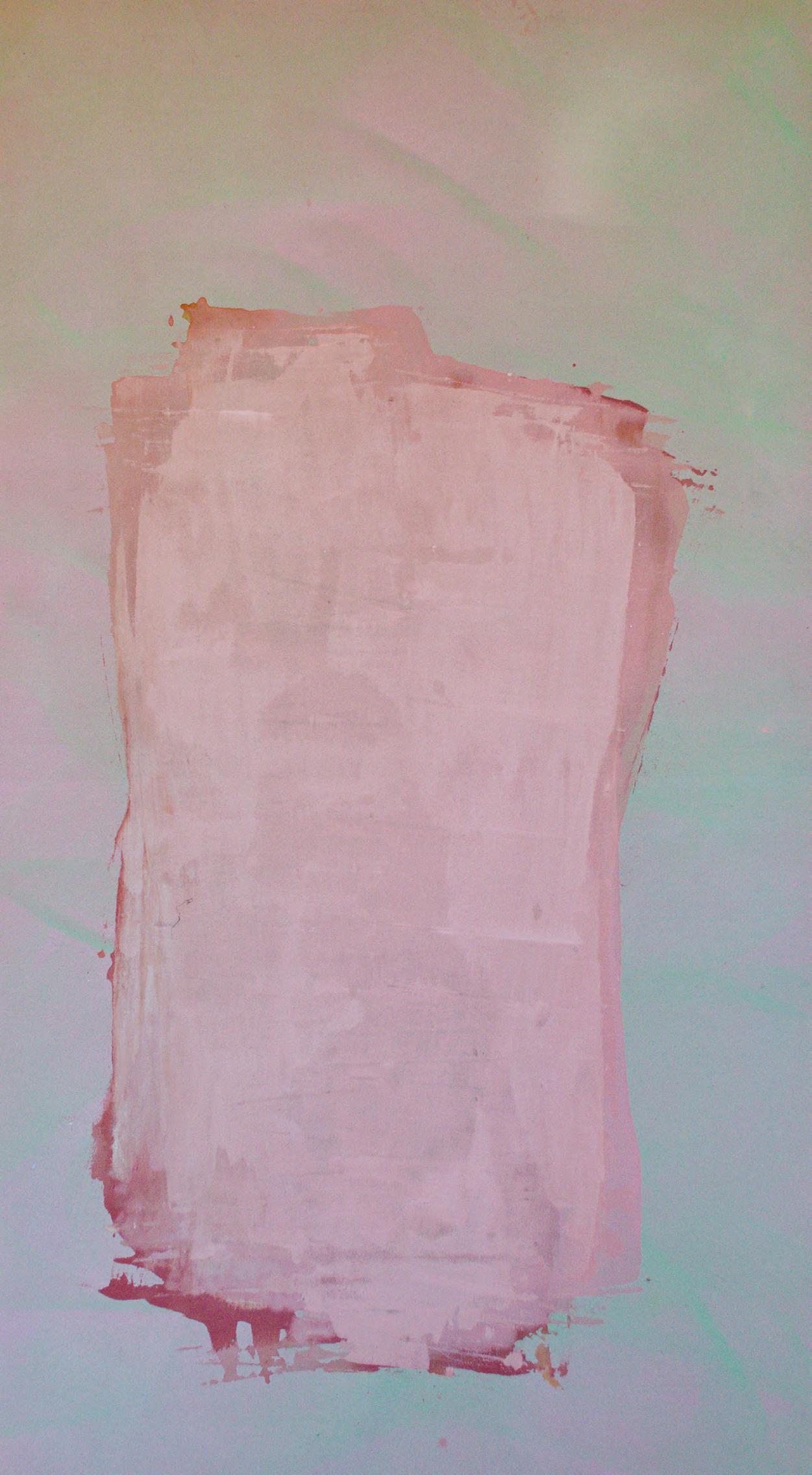
12
Befit, 1979
acrylic and mixed media on canvas, 79 x 67 in.
signed, titled and dated on the reverse

13
Pomeyer, 1972
acrylic and enamel on canvas, 21 3/4 x 17 3/4 in. signed, titled and dated on the reverse

14
acrylic on canvas, 39 1/2 x 27 1/2 in. signed on the reverse
 Untitled A-1, 1975
Untitled A-1, 1975
15
Yellow Tail I
 acrylic and mixed media on canvas
acrylic and mixed media on canvas
16
40 x 76 1/2 in.
Little Regular, 1972
acrylic on canvas, 24 3/4 x 16 in. signed, titled and dated on the reverse

17
Coosa, 1972
acrylic on canvas, 65 1/2 x 44 1/2 in. signed, titled and dated on the reverse

18
Bandoline III, 1978

acrylic and mixed media on canvas, 71 1/2 x 49 in.
signed, titled and dated on the reverse
19
Ashton, 1972
acrylic on canvas, 24 3/4 x 20 3/4 in.
signed, titled and dated on the reverse

20
Untitled

21
acrylic on canvas, 12 1/2 x 45 in. signed on the reverse
Ivywild, 1973
acrylic on canvas, 72 x 53 1/2 in.
signed, titled and dated on the reverse

22
acrylic on canvas, 86 x 56 1/2 in. signed, titled and dated on the reverse
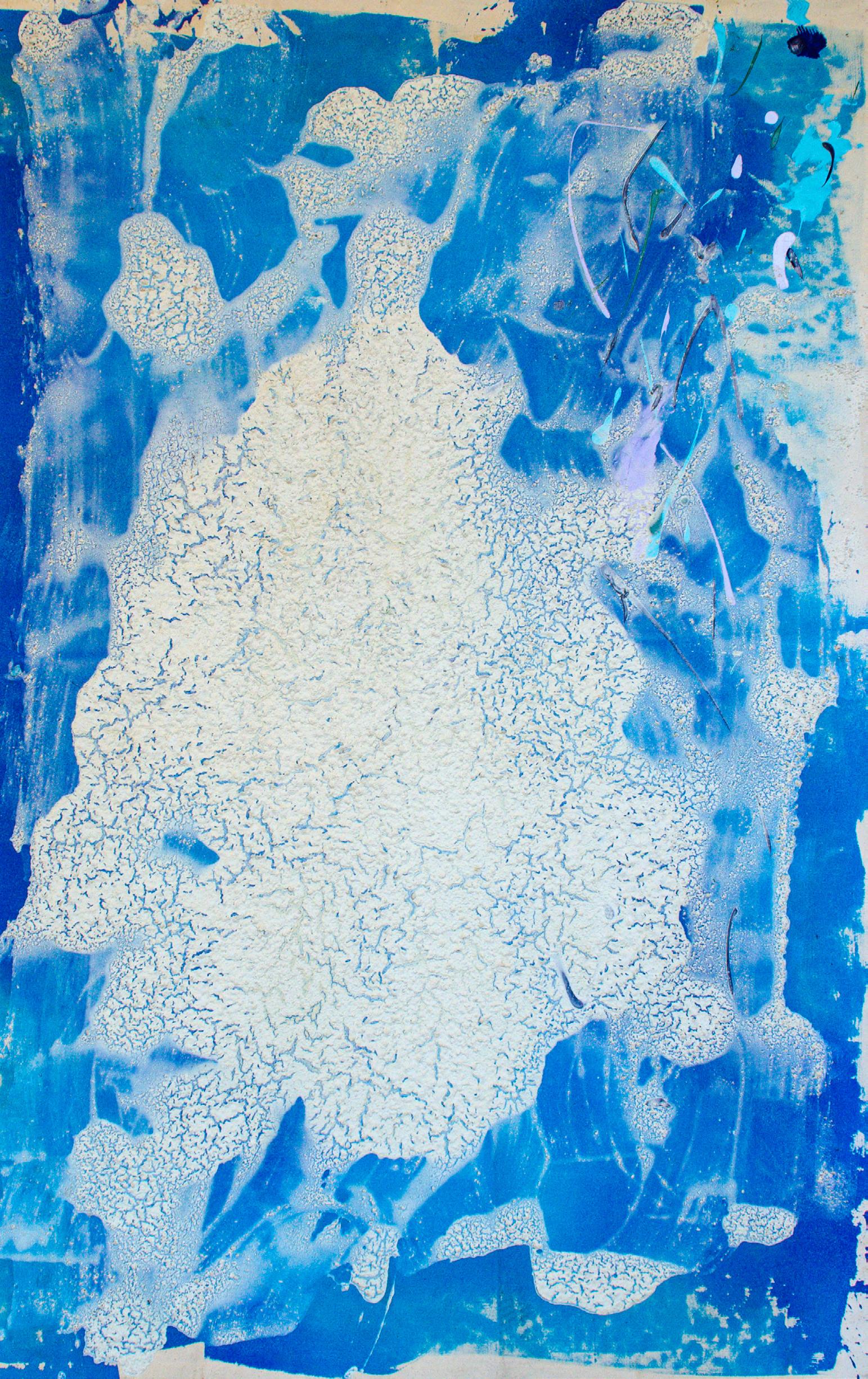 Mr. Whisper, 1979
Mr. Whisper, 1979
23
Dry Gulch, 1979
acrylic on canvas, 66 x 24 1/2 in. signed, titled and dated on the reverse
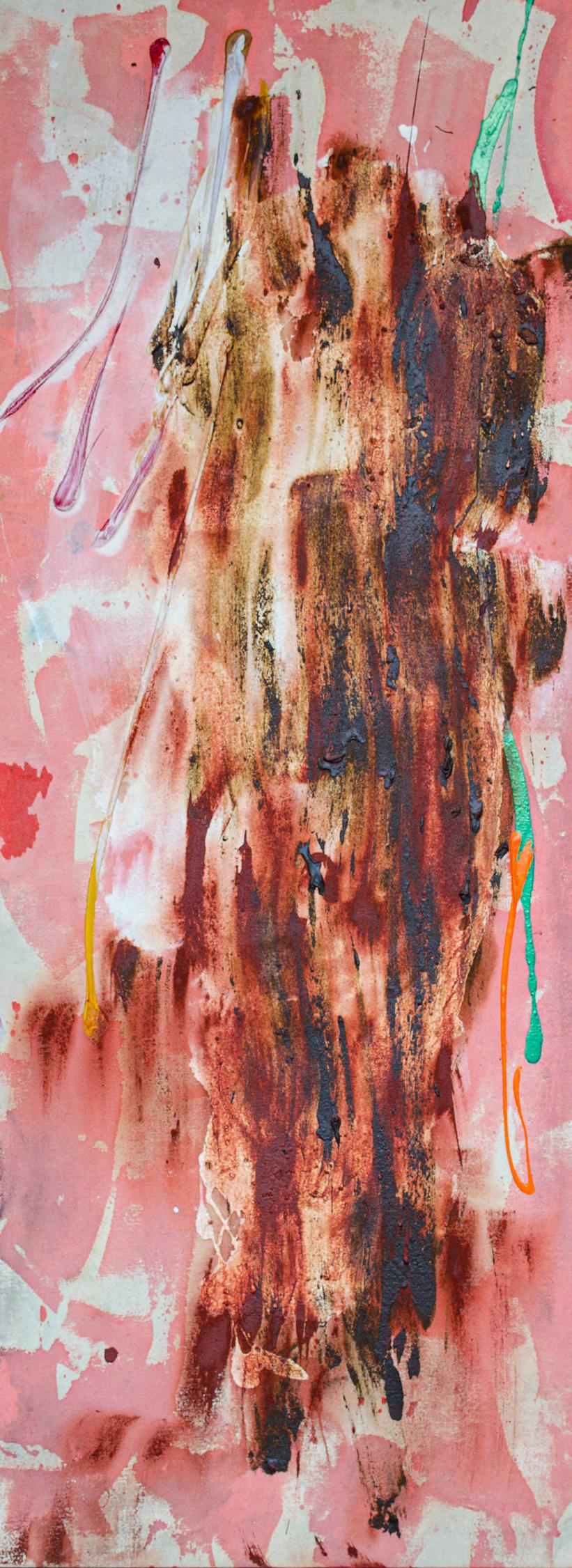
24
Romantic Nonsense, 1979
acrylic on canvas, 71 1/2 x 24 in.
signed, titled and dated on the reverse

25
Untitled A-2, 1975
acrylic on canvas, 12 1/2 x 16 in. signed, titled and dated on the reverse

26
acrylic on canvas, 34 1/2 x 22 in. signed, titled and dated on the reverse

Pete’s Neck, 1981
27
enamel on canvas, 27 x 26 in. signed, titled and dated on the reverse
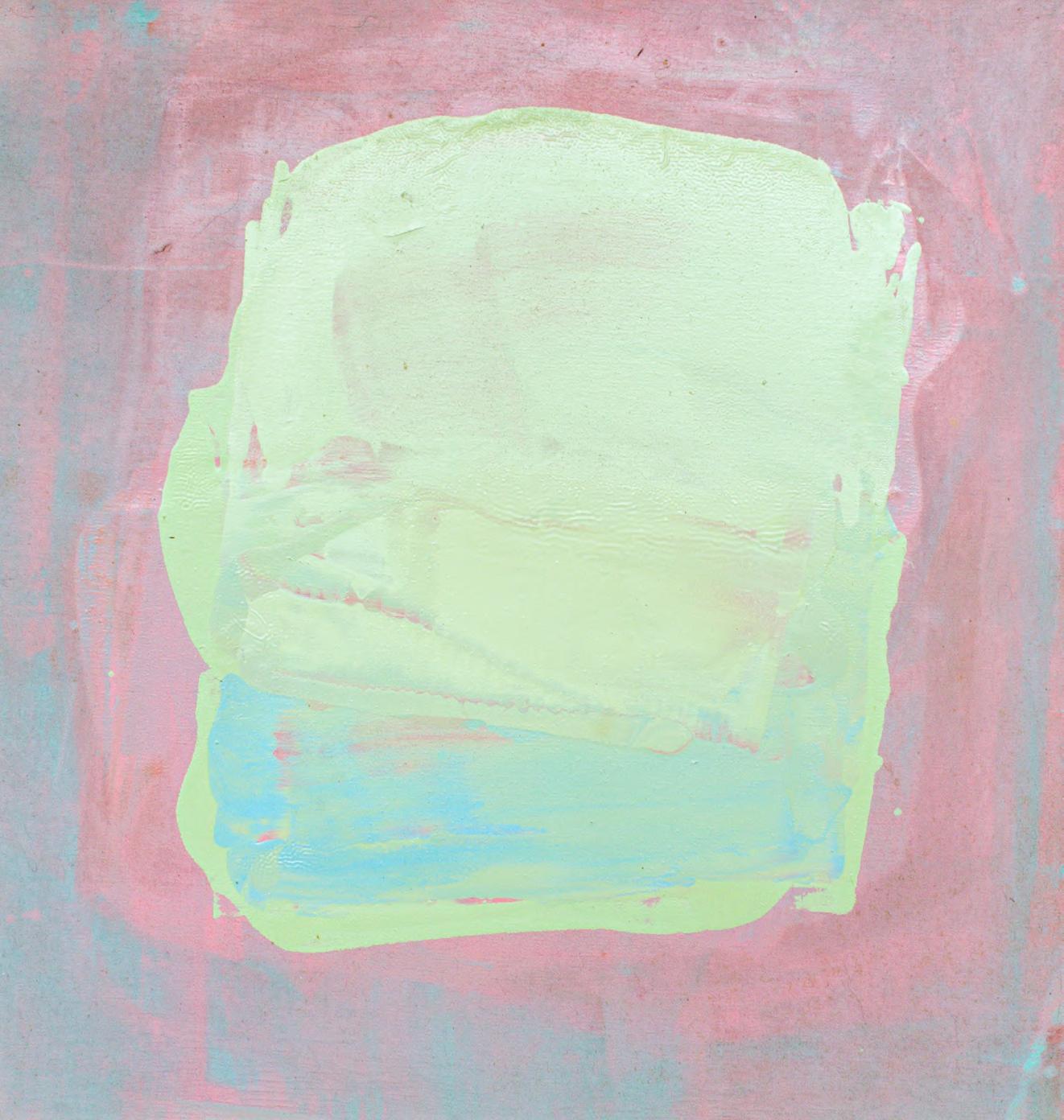 Coker, 1972
Coker, 1972
28
Red Peak, 1979
acrylic and mixed media on canvas, 37 x 28 in.
signed, titled and dated on the reverse
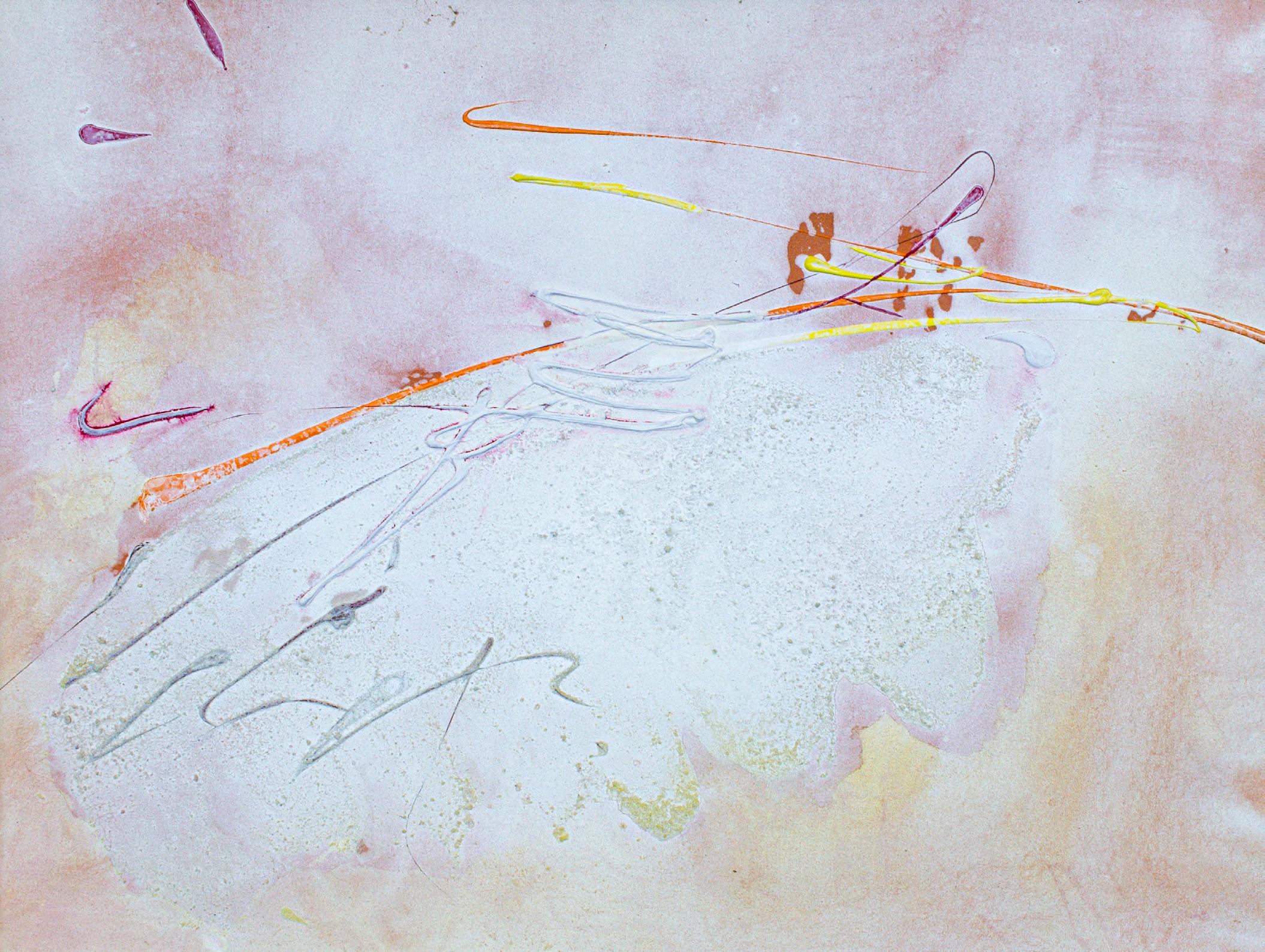
29
signed and dated on the reverse

Pio Pio, 1972
acrylic on canvas, 66 3/4 x 45 1/2 in.
30
acrylic on canvas, 64 x 42 in. signed, titled and dated on the reverse
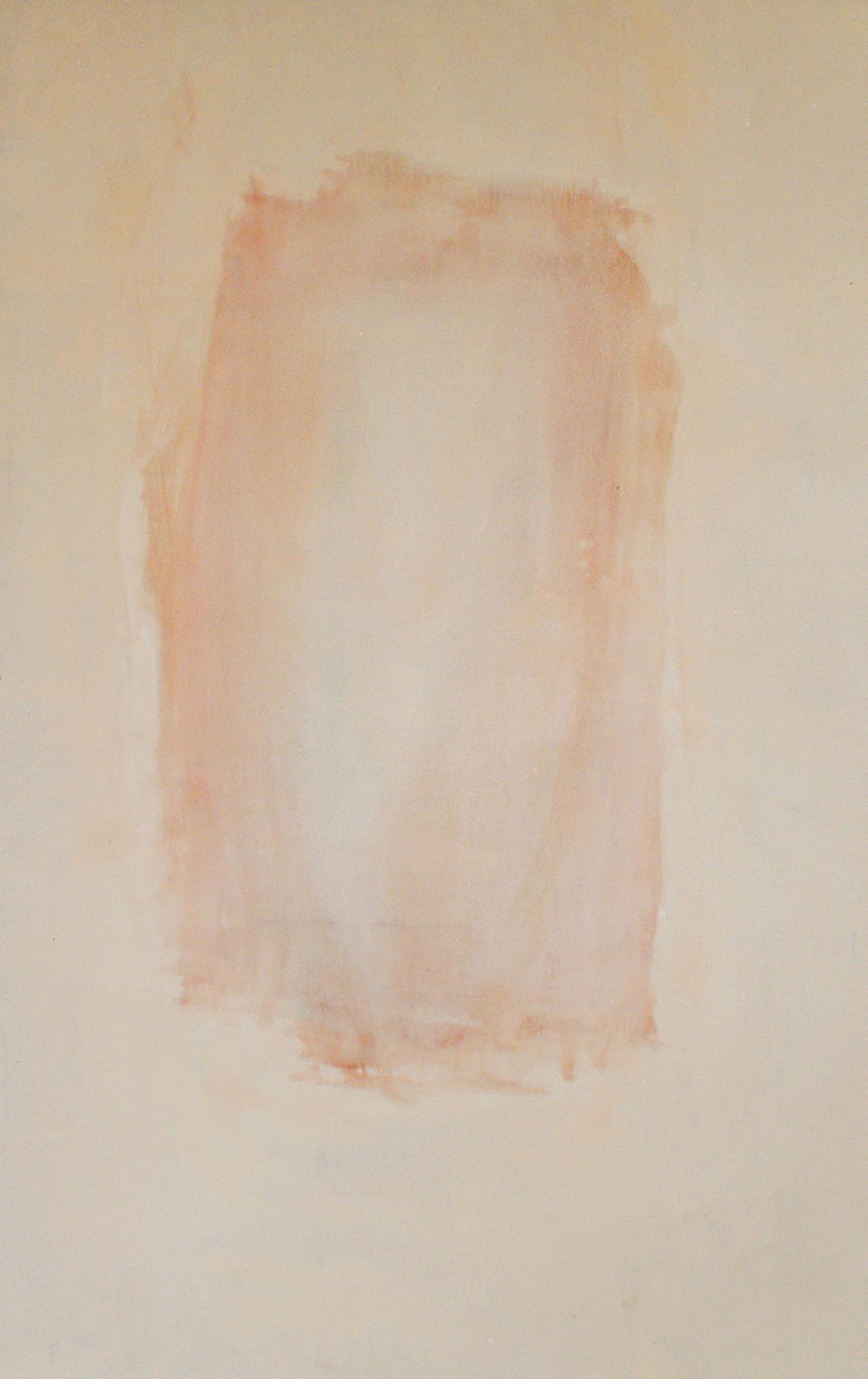
Eby, 1972
31
List of Works
Coarse Aggregate, 1972
Acrylic and mixed media on canvas
79 x 67 inches
Signed, titled and dated on the reverse
Tideline, 1977
Acrylic on canvas
93 x 45 inches
Signed, titled and dated on the reverse
Fat Ruby, 1972
Acrylic on canvas
84 x 47 inches
Signed on the reverse
Befit, 1979
Acrylic and mixed media on canvas
79 x 67 inches
Signed, titled and dated on the reverse
Pomeyer, 1972
Acrylic on canvas
66 3/4 x 45 1/2 inches
Signed, titled and dated on the reverse
Untitled A-1, 1975
Acrylic on canvas
39 1/2 x 27 1/2 inches
Signed on the reverse
Yellow Tail I
Acrylic and mixed media on canvas
40 x 76 1/2 inches
Little Regular, 1972
Acrylic on canvas
24 3/4 x 16 inches
Signed, titled and dated on the reverse
Coosa, 1972
Acrylic on canvas
65 1/2 x 44 1/2 inches
Signed, titled and dated on the reverse
Bandoline III, 1978
Acrylic and mixed media on canvas
71 1/2 x 49 inches
Signed, titled and dated on the reverse
Ashton, 1972
Acrylic on canvas
24 3/4 x 20 3/4 inches
Signed, titled and dated on the reverse
Untitled
Acrylic on canvas
12 1/2 x 45 inches
Signed on the reverse
Ivywild, 1973
Acrylic on canvas
72 x 53 1/2 inches
Signed, titled and dated on the reverse
Mr. Whisper, 1979
Acrylic on canvas
86 x 56 1/2 inches
Signed, titled and dated on the reverse
Dry Gulch, 1979
Acrylic on canvas
66 x 24 1/2 inches
Signed, titled and dated on the reverse
Romantic Nonsense, 1979
Acrylic on canvas
71 1/2 x 24 inches
Signed, titled and dated on the reverse
Untitled A-2, 1975
Acrylic on canvas
12 1/2 x 16 inches
Signed, titled and dated on the reverse
Pete’s Neck, 1981
Acrylic on canvas
34 1/2 x 22 inches
Signed, titled and dated on the reverse
Coker, 1972
Enamel on canvas
27 x 26 inches
Signed, titled and dated on the reverse
Red Peak, 1979
Acrylic and mixed media on canvas
37 x 28 inches
Signed, titled and dated on the reverse
Pio Pio, 1972
Acrylic and enamel on canvas
21 3/4 x 17 3/4 inches
Signed and dated on the reverse
Eby, 1972
Acrylic on canvas
64 x 41 inches
Signed, titled and dated on the reverse
32
Selected Solo Exhibitions
Indiana University, Bloomington, IN, 1966
Bowery Gallery, NYC, 1970
Andre Emmerich Gallery, NYC, 1974, 1973
Janie C. Lee Gallery, Houston, TX, 1974
B. Kornblatt Gallery, Baltimore, MD, 1977
Tibor de Nagy Gallery, NYC, 1978, 1980
Bell Gallery, List Art Ctr, Brown Univ, Providence, RI 1979
Watson/de Nagy & Co., Houston, TX, 1980, 1984
Douglas Drake Gallery, Kansas City, MO, 1981
Clayworks Studio Workshop, NYC, 1982
Rubiner Gallery, Detroit, Michigan, 1985
Selected Group Exhibitions
Speed Museum, Invitational Exhibition, Louisville, Kentucky, 1964
Evansville Museum, Midstates Exhibition, Evansville, Indiana, 1965-1966
University of North Dakota, North Dakota Annual, Grand Forks, North Dakota, 1966
Bowery Gallery, New York, 1969
Galleria 11 Fante Di Spade, Rome, Italy, 1972
Andre Emmerich Gallery, New Talent Show, New York, New York, 1972
Whitney Museum of American Art, Whitney Biennial, New York, New York, 1973
Janie C. Lee Gallery, Houston, Texas, 1973, 1975
Gallerie Andre Emmerich, Zurich, Switzerland, 1973, 1975
Museum of Fine Arts, Houston, Three Young American Painters, 1974
Dootson/Calderhead Gallery, Seattle, Washington, 1975
Museum of Fine Arts, Houston, Modern Painting: 1900 to the Present, 1975
Edmonton Art Gallery, New Abstract Art, Edmonton, Alberta, Canada, 1977
American Academy & Institute of Arts and Letters, New York, New York, 1978
Traveling Exhibition, Clayworks, Squires Art Gallery, Virginia Tech, Blacksburg, Virginia, 1981
Douglas Drake Gallery, Abstract Paintings, Kansas City, MO, 1981
Watson/de Nagy & Co., New Work New York, Houston, Texas, 1981
Clayworks Studio Workshop, Visiting Artists, New York, New York, 1981
Traveling Exhibition, Broken Surface, Virginia State, Bennington College, Tibor de Nagy, 1981
Rubiner Gallery, Selected Paintings of Contemporary Abstractionists, Detroit, Michigan, 1982
C.D.S. Gallery, Artists Choose Artists, New York, New York, 1983
Watson/de Nagy & Co., Clayworks, Houston, Texas, 1984
Douglas Drake Gallery, Toot, Kansas City, MO, 1985
Douglas Drake Gallery, Wood, New York, New York, 1989
Douglas Drake Gallery, Small Paintings: Big Issues, New York, New York, 1993
Columbia Museum of Art, Columbia, South Carolina, 2001
Portland Art Museum, Clement Greenberg: A Critics Collection, Portland, Oregon, 2001
Art Museum of South Texas, Modernism of the 1970s, Corpus Christi, Texas, 2008
Art Museum of South Texas, Looking Back and to the Now, Corpus Christi, Texas, 2020-21
33
Artist CV
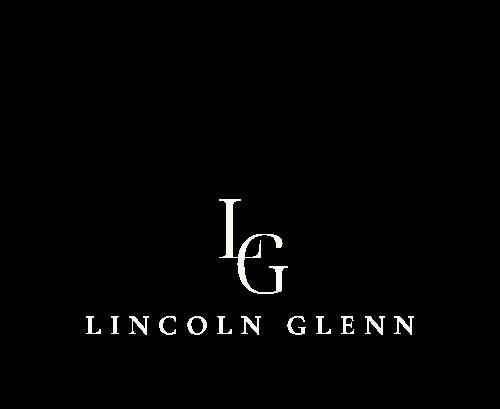
 by Lisa N. Peters, Ph.D.
by Lisa N. Peters, Ph.D.


 Befit, 1979, acrylic and mixed media on canvas, 79 x 67 in.
Befit, 1979, acrylic and mixed media on canvas, 79 x 67 in.






 Untitled A-1, 1975
Untitled A-1, 1975
 acrylic and mixed media on canvas
acrylic and mixed media on canvas






 Mr. Whisper, 1979
Mr. Whisper, 1979




 Coker, 1972
Coker, 1972




